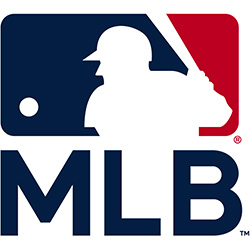 We’ll see an assortment of 2023 MLB rule changes, as the sport’s Competition Committee puts new limitations on defensive shifts, implements a pitch timer and approves larger bases.
We’ll see an assortment of 2023 MLB rule changes, as the sport’s Competition Committee puts new limitations on defensive shifts, implements a pitch timer and approves larger bases.
Though it’s been debated for years and criticized by some purists, the pitch timer is deigned to improve pace of play and reduce dead time. The Pitch Timer Regulations include the following provisions:
- A pitcher must begin his motion before the expiration of the timer. Pitchers will have up to 15 seconds between pitches when the bases are empty and up to 20 seconds between pitches with at least one runner on base. Testing in MiLB involved 14 seconds with the bases empty and 18 seconds (19 seconds in Triple-A) with at least one runner on base.
- A pitcher may disengage the rubber (timer resets) twice per plate appearance without penalty.
- Subsequent disengagements result in a balk, unless an out is recorded on a runner.
- The disengagement count resets if the runner advances; testing in the minors had no reset until the following plate appearance.
- A hitter must be in the batter’s box and alert to the pitcher with at least eight seconds remaining. Testing in the minors included nine seconds remaining.
- A hitter receives one timeout per plate appearance.
- Umpires will have authority to provide additional time if warranted by special circumstances (e.g., the catcher makes the last out of the inning and needs additional time to get into defensive position).
The numbers show that pitch timers do work, if the MiLB experience carries through to MLB Compared to last season, the pitch clock reduced the average nine-inning game time by 26 minutes (from 3:04 in 2021 to 2:38 in 2022) while increasing action on the field. A bonus: Stolen base attempts per game have increased from 2.23 in 2019, at a 68 percent success rate, to 2.83 in 2022, at a 77 percent success rate. Once players got used to a pitch clock, we found it was a self-regulating rule–MiLB has averaged just 0.45 timer violations per game in the most recent week of play.
We also expect plenty of criticism of the new restrictions on shifts: purists will point out that defensive shifts have been part of the game for decadesand that the test of a great hitter should be how they handle the shift.
The new rule mandates two infielders must be positioned on each side of second base when the pitch is released, and All four infielders must have both feet within the outer boundary of the infield when the pitcher is on the rubber. Not entirely sure this is a move toward a traditional aesthetic as MLB argues (heck, Ted Williams faced shifts during his career), but it does remove a stats-driven part of the game and it does encourage more balls in play.
Not all the rule changes are controversial. The move to larger bases has been closely vetted in the minors; we’ve attended many games this season and didn’t see it impacting a game once, much less being noticeable. The specifics: the size of first, second,= and third base will increase from the standard 15 inches square to 18 inches square, with the goal of positive impact on player health. Tested out this season in the minors, base-related injuries decreased by 13.5 percent in MiLB this season, including declines at every level.
The new rules will be implemented in 2023 spring training.
